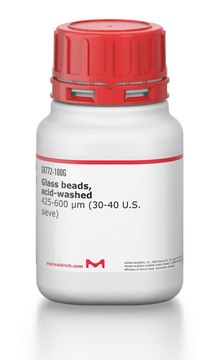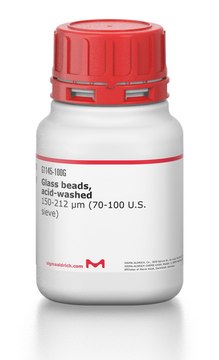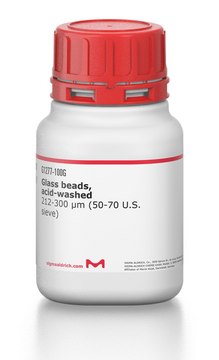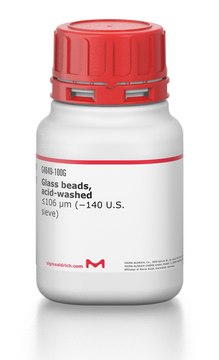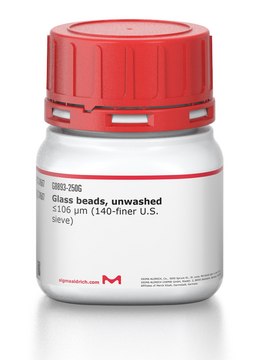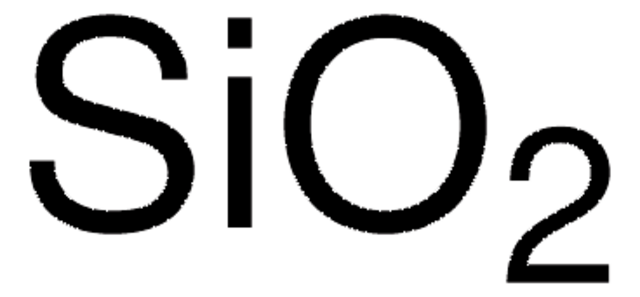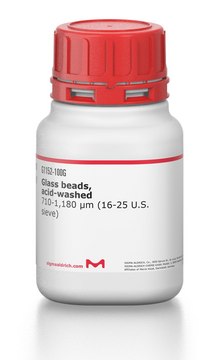推荐产品
粒径
212-300 μm (50-70 U.S. sieve)
相关类别
应用
未洗玻璃珠已用于从颜色芽生菌提取DNA。
储存分类代码
11 - Combustible Solids
WGK
WGK 3
闪点(°F)
Not applicable
闪点(°C)
Not applicable
个人防护装备
Eyeshields, Gloves, type N95 (US)
历史批次信息供参考:
分析证书(COA)
Lot/Batch Number
Renata R Gomes et al.
PLoS neglected tropical diseases, 10(11), e0005102-e0005102 (2016-11-29)
The human mutilating disease chromoblastomycosis is caused by melanized members of the order Chaetothyriales. To assess population diversity among 123 clinical strains of agents of the disease in Brazil we applied sequencing of the rDNA internal transcribed spacer region, and
Mohammad Javad Najafzadeh et al.
Emerging infectious diseases, 17(3), 464-469 (2011-03-12)
To assess population diversities among 81 strains of fungi in the genus Fonsecaea that had been identified down to species level, we applied amplified fragment-length polymorphism (AFLP) technology and sequenced the internal transcribed spacer regions and the partial cell division
Anamangadan Shafeeq Hassan et al.
Medical mycology, 54(3), 287-294 (2015-12-27)
Fusarium species are reported frequently as the most common causative agents of fungal keratitis in tropical countries such as India. Sixty-five fusaria isolated from patients were subjected to multilocus DNA sequencing to characterize the spectrum of the species associated with
M J Najafzadeh et al.
Microbial pathogenesis, 125, 43-47 (2018-09-09)
Chromoblastomycosis is one of the most prevalent implantation fungal infections caused by melanized fungi, affecting individuals with certain risk factors with high morbidity due to its recalcitrant nature. It is difficult to identify the etiological agents and thus a suitable
M J Najafzadeh et al.
Mycopathologia, 183(4), 669-677 (2018-03-06)
The black yeast genus Exophiala includes numerous potential opportunistic species that potentially cause systematic and disseminated infections in immunocompetent individuals. Species causing systemic disease have ability to grow at 37-40 °C, while others consistently lack thermotolerance and are involved in diseases
我们的科学家团队拥有各种研究领域经验,包括生命科学、材料科学、化学合成、色谱、分析及许多其他领域.
联系技术服务部门